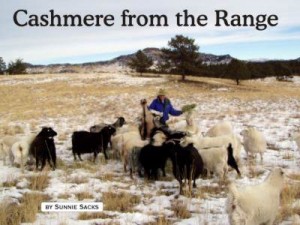Essay by Allen Best
Climate – March 2005 – Colorado Central Magazine
ARIDITY IN THE AMERICAN Southwest has always been axiomatic, nearly a point of pride. It’s how we define the region. But evidence trickling in suggests that we have not yet begun to appreciate water scarcity.
The summer of 2002, coming after four snow-famished winters in the Rocky Mountains, may have given us a peek at this more barren future. Streamflows that desiccated summer may have been the lowest in 300 year in parts of the Southwest. Forest fires raged from Colorado to Arizona to Oregon. Fields at some farms never became more than stubble, and suburban lawns turned twitchy brown. I even saw grass in a Denver park painted green. Talk about denying reality.
Yet population growth alone ensures more pinched water supplies. The major lifeline for this region is the Colorado River. By one estimate it already serves 25 million people from Denver to San Diego, and from Albuquerque to Salt Lake City. Some of these far corners are projected to be among the fastest growing places of the next 25 years, just as they have been for the last quarter century.
But what if, in addition to serving more people, the Colorado River actually carries less water? That’s the scenario now being examined by water managers as well as experts in climate change. The pivot for this discussion is the Colorado River Compact of 1922, which apportions the water among the seven states of the basin.
The compact was struck during a time of abnormally wet weather, the wettest period of the 20th century. Now, new tree-ring research and other techniques reveal that the 20th century was possibly the wettest period during the last 1,000 years. Moreover, droughts in this more distant past often lasted 30 years, unlike the more ephemeral droughts of the 20th century such as the Dust Bowl. And to think, the Dust Bowl was sufficient to launch a great migration and spawn a great novel.
After only five years of drought, the two giant buckets on the Colorado River, Mead and Powell, have dropped to worrisome levels. Despite a snowpack that has boosted the projected runoff to 120 percent of average, there is worry the weather may turn hot and dry in March, like it did last year. And even if March remains “normal,” experts say it will take several “normal” years for the reservoirs to recover.
And what if hot and dry returns again next year? That prospect has water officials from Denver to Los Angeles plotting backup strategies, and has already provoked U.S. Interior Secretary Gale Norton to intervene. The shock is probably greatest in Colorado.
Colorado had instigated the river compact 80-plus years ago, correctly predicting that California and Arizona would develop more rapidly. The compact was seen as a way of ensuring Colorado’s water entitlements once it finally gained population.
California and other lower-basin states used their water and then some. The cry in Colorado during recent years was that California has been “stealing” Colorado water. Use it or lose it, has been the rally cry of those Coloradans wanting to push the development pace, afraid that California will get too accustomed to this ill-gotten water.
IF POWELL AND MEAD empty, the tables could be turned. The 1922 compact anticipated surpluses, but it did not contemplate serious, extended droughts. By one read of the compact, Colorado and other upper-basin states could actually be required to surrender water to Arizona, Nevada, and California. This possibility, if still remote, is as foreign as the sun one morning rising in the west.
Although Interior Secretary Gale Norton has intervened, ordering collaboration among the states of the Colorado River Basin, Colorado’s state government is taking the possibility seriously. Some $2 million has been allocated to lawyers and hydrologists to shore up Colorado’s options. State officials have urged cities, ski resorts, and farm districts to devise back-up plans for reduction in water use.
But an even greater wild card is the prospect of global warming. Little dissent remains among scientists that temperatures will rise. The computer models for the West are still too crude to confidently predict whether the weather that accompanies rising temperatures will be wetter or drier. But we do know that warmer means more evaporation and transpiration. Hence, only if there is more rain will we have just as much water in our rivers and reservoirs.
It may be too soon to sound the water alarm, but the projections grounded in global warming and the accumulating evidence of past climate variations both recommend a revised appreciation for aridity in the American Southwest.
Allen Best writes from Arvada and Eagle, and learned about water growing up in Fort Morgan.



